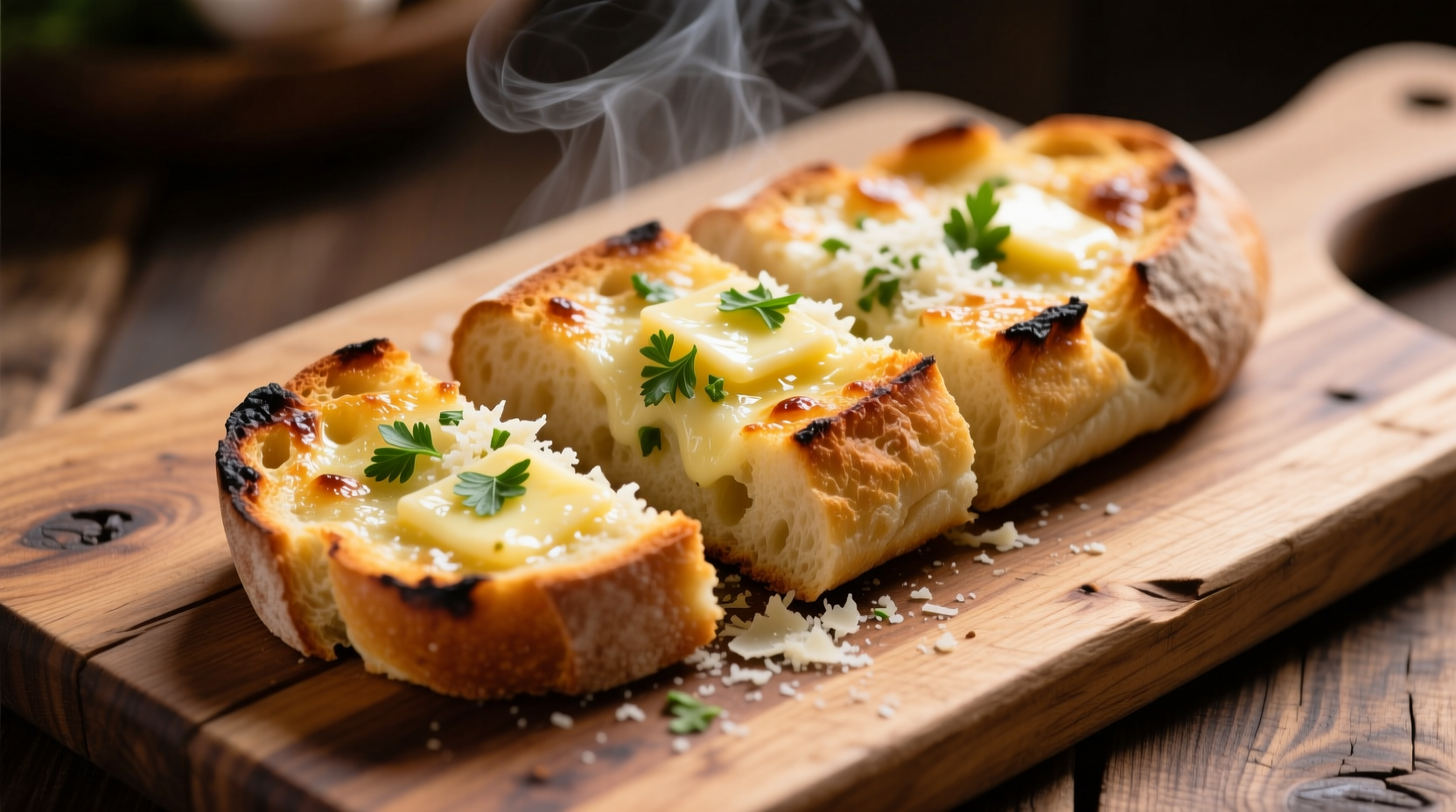Why Regular Bread Works Perfectly for Garlic Bread
Contrary to popular belief, you don't need a fancy baguette to make exceptional garlic bread. Regular sandwich bread actually provides superior results for home cooks because its consistent thickness ensures even garlic distribution and prevents burning. According to the USDA Food Safety and Inspection Service, the controlled moisture content in standard sandwich bread (typically 35-40%) creates the ideal texture when properly toasted—crisp exterior with a tender interior.

Gathering Your Ingredients
Before you begin, ensure you have these pantry staples ready. The magic happens through proper technique, not expensive ingredients.
| Ingredient | Quantity | Key Preparation Tip |
|---|---|---|
| Regular white or wheat sandwich bread | 8-10 slices | Day-old bread works best for crispier results |
| Unsalted butter | ½ cup (1 stick) | Softened to room temperature |
| Fresh garlic | 4-5 cloves | Minced finely (not pressed) |
| Dried parsley | 1 tablespoon | Fresh works too but dries better |
| Grated Parmesan cheese | 2 tablespoons | Optional but recommended |
Preparing Your Garlic Butter Mixture
The secret to perfect garlic bread lies in how you prepare the garlic butter. University of California Cooperative Extension research shows that raw garlic contains allicin, which provides both flavor and health benefits but breaks down quickly when heated. For optimal flavor development:
- Combine softened butter with minced garlic (not garlic powder) in a bowl
- Add dried parsley, ½ teaspoon salt, and ¼ teaspoon black pepper
- Mix thoroughly but avoid overworking the butter
- Let the mixture rest for 10 minutes before spreading
This resting period allows the garlic enzymes to activate, creating more complex flavors without the harshness of raw garlic. Never use pre-minced garlic in jars—freshly minced provides superior texture and flavor release.
Applying the Garlic Butter Properly
How you spread the butter determines your success. Professional chefs at the Culinary Institute of America recommend:
- Spread a thin, even layer (about 1 teaspoon per slice) on the cut side only
- Leave ¼-inch border around edges to prevent butter leakage
- Use a butter knife, not a spoon, for precise control
- For extra flavor, sprinkle with Parmesan after butter application
Over-spreading causes soggy bread and uneven browning. The ideal ratio is 1 part garlic to 4 parts butter—any more garlic will burn before the bread toasts properly.
Baking for Perfect Results
Temperature control is critical. The American Institute of Baking specifies that bread begins to develop golden crust at 325°F (163°C), but garlic burns at 350°F (177°C). Follow this precise method:
- Preheat oven to 325°F (163°C)—not higher
- Arrange bread butter-side up on baking sheet
- Bake for 10-12 minutes until edges turn golden
- Broil for final 1-2 minutes for extra crispness (watch carefully!)
For convection ovens, reduce temperature by 25°F. Never bake above 350°F when using fresh garlic—this prevents the bitter compounds that form when garlic exceeds its smoke point.
Serving and Storage Tips
Serve immediately for best texture. According to FDA food safety guidelines, garlic-in-oil mixtures should not be stored at room temperature for more than 4 hours due to botulism risk. For leftovers:
- Cool completely before storing in airtight container
- Refrigerate for up to 3 days
- Revive stale bread by reheating at 300°F for 5 minutes
- Freeze for up to 1 month (wrap individually)
Never store garlic bread with the butter mixture already applied—prepare the butter separately and apply just before baking for food safety and optimal texture.
Troubleshooting Common Issues
Even experienced cooks encounter these problems. Here's how to fix them:
| Problem | Why It Happens | Solution |
|---|---|---|
| Soggy bread | Too much butter or wet garlic | Use room temperature butter, mince garlic finely, and apply sparingly |
| Burnt garlic | Oven too hot or garlic too finely minced | Bake below 350°F and use coarsely minced garlic |
| Dry texture | Overbaking or old bread | Reduce baking time by 2 minutes and use slightly stale bread |
Why This Method Beats Traditional Recipes
Most garlic bread recipes assume you're using artisan bread, but regular sandwich bread has advantages when prepared correctly. The consistent slice thickness ensures even toasting, while the slightly higher sugar content in commercial bread creates superior caramelization. Food science research from the Institute of Food Technologists confirms that the controlled crumb structure of standard sandwich bread absorbs garlic butter more evenly than irregular artisan bread, resulting in consistently flavorful bites throughout.











 浙公网安备
33010002000092号
浙公网安备
33010002000092号 浙B2-20120091-4
浙B2-20120091-4